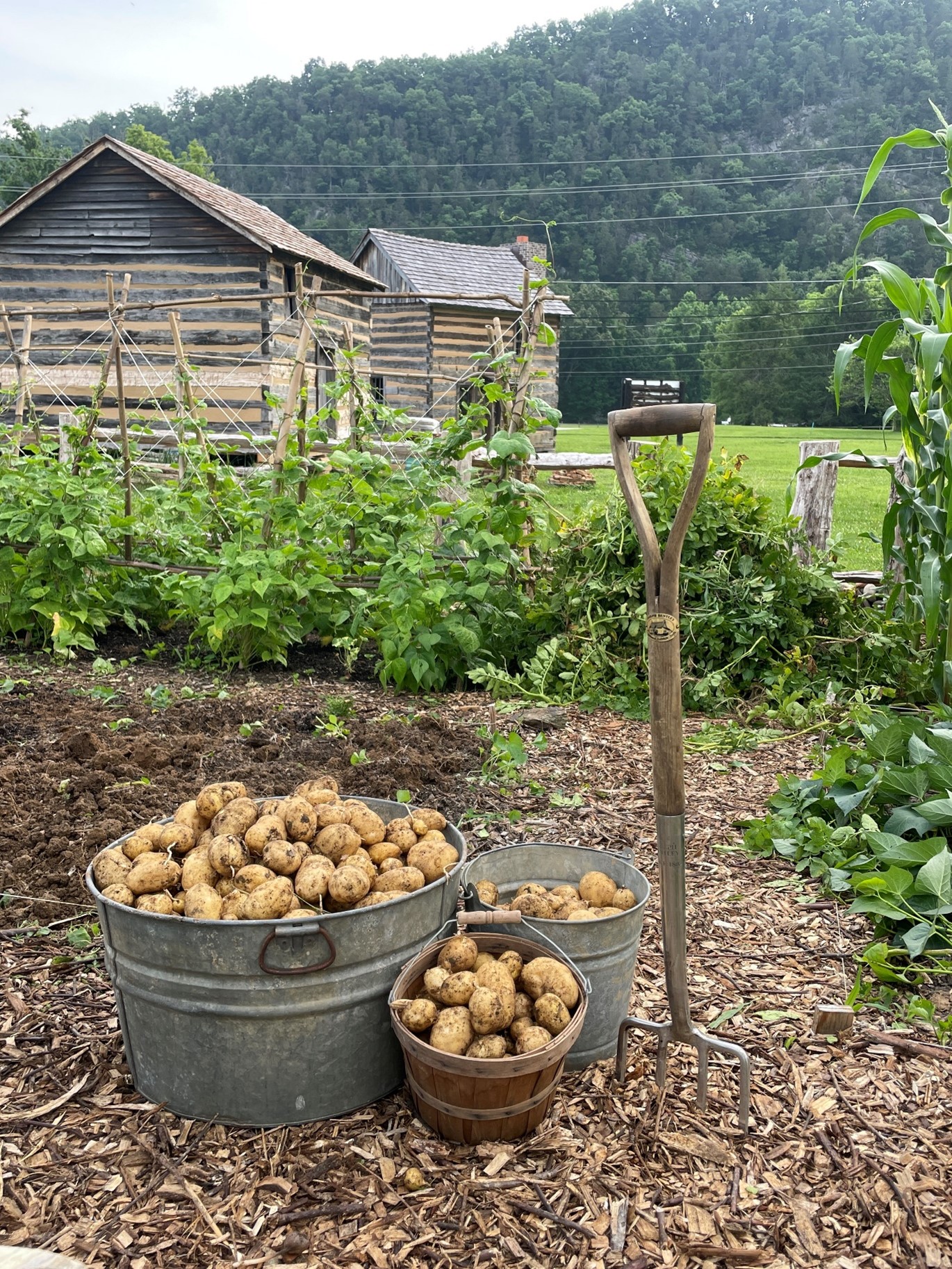The Heirloom Kitchen Garden Summer Report – submitted by Allison Pearson
Tuckaleechee Garden Club maintains the Heirloom Kitchen Garden at Great Smoky Mountains Heritage Center, Townsend, TN. The garden replicates those planted by settlers in Tennessee and the broader Southern Appalachian Region in the 1800s.
Led by Co-Chairs Diane Rhotert and Debbie Dickie, Club members work the garden weekly, weeding, removing nuisance insects, as well as harvesting and replanting. Seventy pounds of German Butterball potatoes have been harvested, and that section of the garden replanted with Connecticut Field Pumpkin. Connecticut Field pumpkin has origins back to about 1700 and is considered by some as the original Thanksgiving pumpkin in America. Beans in the garden are trellised, climbing, blooming, and beginning to produce. The garden features Cherokee Trail of Tears Pole Bean, the bean carried on the Trail of Tears by the Cherokee Indians, and the Greasy Pole Bean, Lazy Wife. Cocke’s Prolific Dent Corn, a variety grown by Thomas Jefferson at Monticello, is now about 9 feet tall and producing ears.
The medicinal herb garden and flowers are also thriving. Chamomile and Echinacea are blooming. Boneset, tansy, and yarrow are growing tall. The peppermint and bee balm are beautiful. In keeping with Appalachian tradition, our garden also features flowers such as sunflower, zinnia, borage, and “Old Blush” rose.
The common challenges maintaining the garden are heat, lack of rain, and insects. Working the garden in period dresses is a unique challenge in the summer heat. Mexican Bean Beetle (Epilachna varvestis) and Japanese Beetle (Popillia japonica) are damaging most plants in the garden. The Mexican Bean Beetle looks like a coppery-brown ladybug, and they feed on the underside of the bean leaves, with only the veins of the leaf remaining. The Japanese Beetle attacks the foliage, flowers, and fruits of more than 300 different plants skeletonizing the leaves within a few days. For minimizing the beetle damage, we are (1) hand picking beetles, dropping them into a container of soapy water, (2) using pheromone traps placed outside the garden, and (3) planting marigolds to lure the beetles away from the vegetables.
In maintaining the Heirloom Kitchen Garden, we honor those who settled this area, especially the women who cared for the kitchen gardens to feed their families and provide herbal medicines to heal their loved ones. We are learning first-hand just how hard their job was!
Harvest of German Butterball potatoes at the Heirloom Kitchen Garden.
